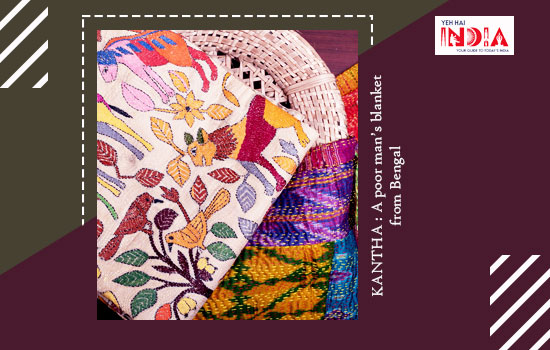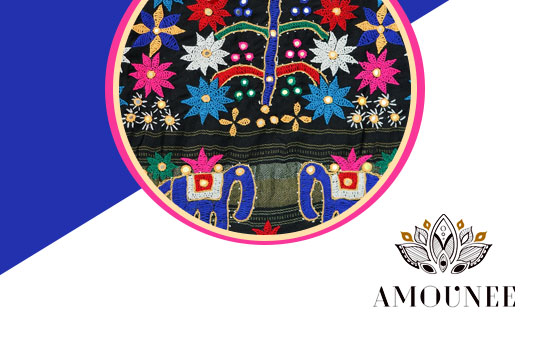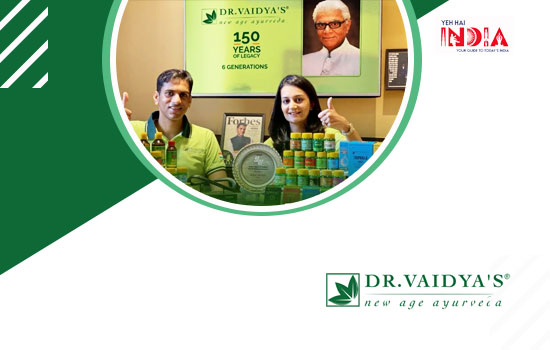Kantha is perhaps the oldest form of Indian embroidery serving as a pride of Bengal and has really come a long way from where it began.
An object is created as a venture at thrift, forming an example of a strange contradiction, resulting in transformation of worn-out textiles using needlework that would normally be thrown away into objects of rare beauty.
Any garment or cloth with Kantha embroidery, predominantly have a border of decorative running stitch motifs.
Recommended Story – Amounee – The voice of artisans
THE BEGINNING OF KANTHA-

Kantha means ‘rags’ in Sanskrit.
The myth surrounding the craft states that old rags with different kinds of patchworks and layers was used by Lord Buddha and his disciples.
They were used to cover themselves during the nights giving Kantha embroidery its origin and purpose at the same time.
The oldest forms can be traced back to the first and second A.D., with harmonious human motifs, flora and fauna, the tree of life, the sun and the cosmos.
Eventually, something that started as a way for comfort went on to become a big trend in the industry.
INDIVIDUALITY AND INSPIRATION – KANTHA
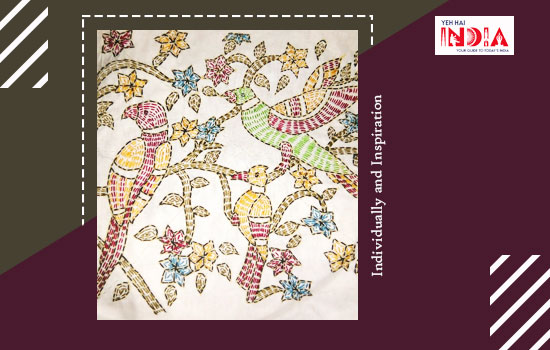
It is fascinating to see how this craft is so inspired by the day-to-day life as well as sustainability.
The motif’s designs were of birds, animals, folk scenes, fishes, and imagery that depicted different views of livelihood for the people living in Bengal.
Reprocessing and recycling was another form of motivation for the same since women started reforming their old clothing for providing them better utility, keeping in mind the aesthetics.
VARIETIES – KANTHA
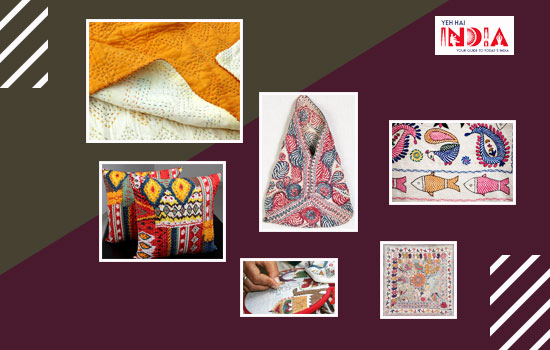
There are several traditional ways to perform this craft:
- Lep Kantha: Rectangular, heavily padded warm coverlets, stitched together over which simple embroidery is executed.
- Sujani Kantha: Rectangular pieces of cloth used as blankets or spreads on ceremonial occasions.
- Baiton Kantha: Square warps used for covering books and other valuables, elaborately patterned with borders of colourful designs.
- Oar Kantha: Rectangular pillow covers in simple design with decorative border sewn around the edges.
- Archilata Kantha: Small rectangular covers for mirrors or toilet accessories with wide colourful borders in wide colourful borders in assorted motifs.
- Durjani Kantha: Small rectangles with a central lotus design and embroidered borders, folded inward to from a wallet.
This craft uses the running stitch in the most beautiful ways imaginable by playing with the length and thickness of the stitch.
Sometimes, stem, herringbone and cross stitch are also used.
THE ROAD TO THE PRODUCT – KANTHA

The pattern is first drawn on paper by hand and then outline is traced onto a tracing paper.
The edges of the pattern are pricked with a needle with a distance of 1 mm between each prick.
Next, the tracing paper is placed on the fabric and a liquid made with kerosene and fabric blue which is soaked in a wad of cloth and then rubbed over the tracing paper to transfer the pattern.
Cane frames or plastic frames are used to stretch the fabric tautly, following with a simple outline made on the pattern with the thread.
Then the patterns are embroidered free hand by the skilled artisans.
Recommended Story – Megastores; Mega Artisans
COLORS AND MOTIFS – KANTHA
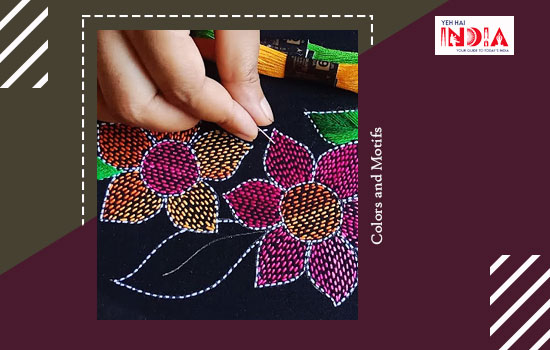
It is traditionally based on everyday life colors like red, yellow, green, blue, and black, as it is derived from old clothing’s while off-white color is contemporaneously used on the base for the embroidered colors to catch the eye of a person.
The earliest form of Kantha motifs depicts nature symbols such as tree of life, the sun and the cosmos.
The central lotus motif is commonly found in Kantha pieces used during special occasions such as wedding ceremonies, births, and prayer rituals.
Ashoka Chakra is a very common design along with peacocks, elephants, fish, creepers, leaves, flowers, and temples.
Many common motifs in Muslim Kantha are geometrically abstract shapes of an Indian folk scene, passed down from mother to daughter.
Some of these motifs are known as star and pinch (tara chutki), stick (laathi), and mirror and hair buns (aina khopa).
SYMBOL OF FEMINISM – KANTHA

There are at least four significant manifestations of feminine in kantha;
- It being made with old sarees
- Its reference to the person who made it
- Its female representations
- Its motifs
Kantha provides a viable means of livelihood to millions of rural women who are able to earn even while staying at home.
There is a large number of clueless, illiterate embroiderers in the making of this craft.
All this, however, is accompanied by some structural changes to the craft:
- From just being a mere activity, it became a means of livelihood
- No more discarded or used materials are being used, but new materials are being used for the base.
Several designers are working with Kantha artisans as a method to promote them as well as to sustain the craft.
They have been innovating and moulding it according to the present-day needs.
Conventionally, the motifs used were of animals or birds, but now with modern-day designers, experiments in designs are also being done.
Hilary Clinton on one of her visits in India was greatly impressed by the rich cultural display of Bengal especially through its embroidery and handcraft.
Also Read – Fabriclore; Fabrics galore!


